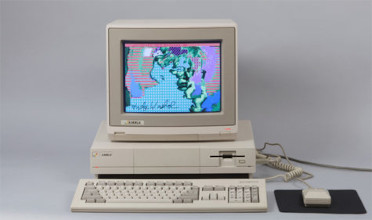Everybody gets a second chance

… and even more obviously, everybody needs a second recap in their quarantined life. After the recap of my A3640 went surprisingly well, and even ripped off pads were replaced and reconnected, I felt confident enough to do a board that’s a little bit bigger and a little bit more involved than that poor little […]
The first cut is the deepest!

A few days ago I did some temperature measurements with my zz9000 graphics card from MNT GmbH in Germany, which turned out to be surprisingly hot. It started out as a test of the CPU temperature of my freshly overclocked MC68060RC50 (rev6) running at 100MHz, when I noticed that the graphics card seemed to run […]
A tale of two diodes…

What happens to long lived electrical engineers? They diode! I have had trouble with the Amiga 4000’s serial port since I got the machine. At first I got a few bytes through every now and then, but it was pretty much unusable, even at 9600 bps. When “learning online” about all the magic of open […]
Keyboard fun!

My keyboard is missing a key. There’s no escape! Well actually it wasn’t escape that was broken on my nice click-a-dee-clack Amiga 4000 keyboard, but CAPS LOCK! And bit even the key itself, it was the LED that just wouldn’t show the status. No problem, let’s take it apart At first I thought the LED […]
Recap of a revised recap

When I got my A4000 late last year, I could not have been a happier kid. I fleas surprised to get it for a fabulous price and it arrived just in time before the holidays. That joy lasted until I noticed that there was no mouse, a Super Buster r6 (WTH) and a semi-professionally done […]